

Kyoto is a beautiful city located about 50km northeast of Osaka. It was the capital of Japan for over 1,000 year (from 794 to 1868). Because of this, it is the centre for Japanese culture and Buddhism. Kyoto is also home to a number of historic temples and gardens. In 1994 sever of these temples and gardens collectively became a UNESCO World Heritage site.
While it is impossible to visit every temple while visiting Kyoto for a few days, here are nine that you should consider visiting while in the city.
Nestled at the base of the Inari mountain, the Fushimi Inari Shrine is known for its thousands of vermilion torii gates, which trail through the woods in a mesmerizing network of paths. These gates, known as “Senbon Torii,” mark the entrance to the sacred space of Inari, the Shinto god of rice, agriculture, and prosperity.
The journey through the Torii gates is both physical and spiritual. The path leads visitors through a tunnel of bright red gates contrasting beautifully with the surrounding greenery. The path is lined with fox statues, considered messengers of Inari, adding a mystical touch to the atmosphere.
Fushimi Inari Shrine is more than just a destination for spiritual seekers. It’s a cultural icon that offers insight into Japanese religious practices and beliefs. The shrine complex sprawls across the mountain. It features multiple smaller shrines, tea houses, and stunning viewpoints over Kyoto. The hike to the summit and back can take about 2-3 hours, but the journey is flexible, allowing visitors to explore at their own pace.
Fushimi Inari Shrine is famous with photographers and culture enthusiasts. Visitors can admire the picturesque torii gates and observe traditional rituals and offerings.
Visiting Fushimi Inari Shrine offers a unique blend of natural beauty, spiritual significance, and cultural exploration.
Visiting Kinkaku-ji, the Golden Pavilion, in Kyoto is an unforgettable experience that captivates every traveller’s heart. This iconic Zen Buddhist temple is renowned for its stunning architecture. The brilliant gold leaf covers its exterior and reflects beautifully on the mirror pond before it. Kinkaku-ji, formally known as Rokuon-ji, is a testament to the lavish aesthetics of Muromachi period Japan. It is a designated UNESCO World Heritage Site.
Set within a meticulously maintained garden that epitomises classical Japanese garden design, the temple grounds offer a tranquil retreat from the bustling city. Each of the pavilion’s three floors showcases a different architectural style. They blend harmoniously to create a masterpiece of religious art symbolising the Pure Land of Buddha.
Kinkaku-ji offers a different experience in every season. The lush greenery of summer. The exquisite colours of autumn. The serene beauty of snow in winter. All provide unique backdrops for the pavilion’s splendour. The golden pavilion’s reflection in the pond is mesmerising, symbolising the harmony between nature and architecture.
A visit to Kinkaku-ji is not just a visual delight; it’s an immersion into Kyoto’s cultural and spiritual history. It offers insights into the practice of Zen Buddhism and the aesthetic values that have shaped Japanese art and architecture for centuries.
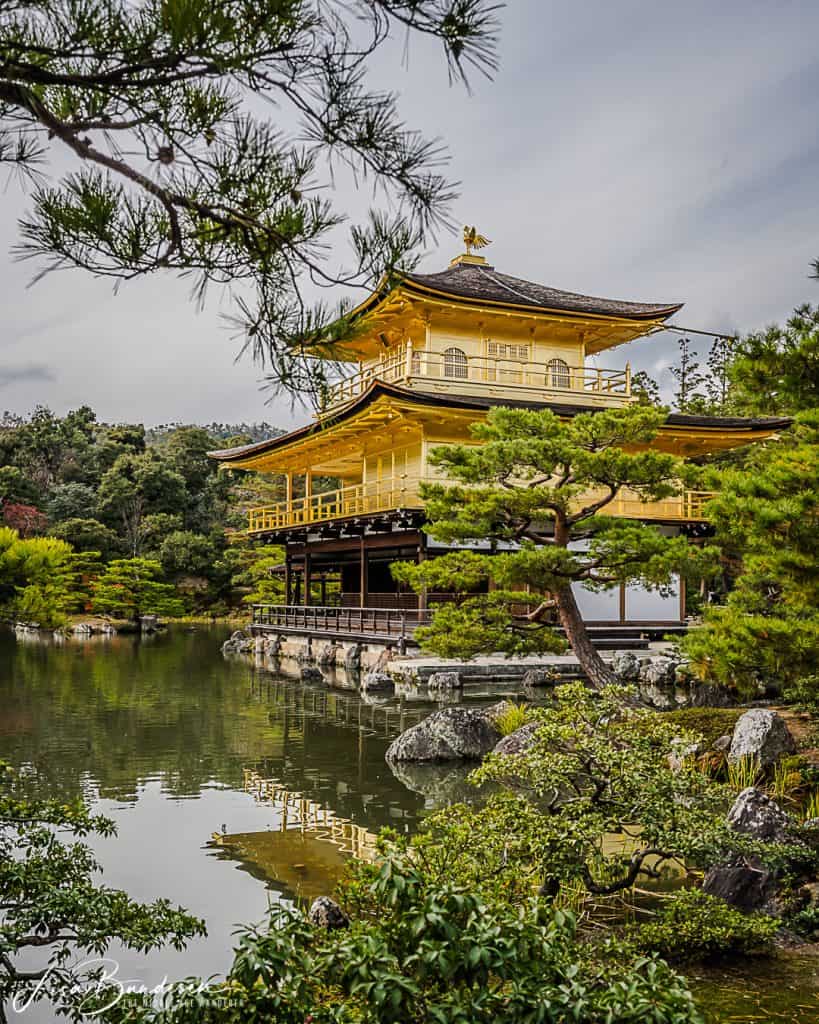
Visiting Kiyomizu-dera in Kyoto is a breathtaking experience. This historic temple, perched on the hills of Eastern Kyoto, offers stunning views. Founded in the late 8th century, it’s a UNESCO World Heritage Site. The temple is famous for its wooden stage. This stage juts out from the main hall, 13 meters above the hillside. Below, cherry blossoms or autumn leaves create a vibrant tapestry.
The main hall, dedicated to Kannon, the Goddess of Mercy, is an architectural marvel. It was constructed without a single nail. Pilgrims and tourists flock here for its spiritual significance and beauty. The Otowa Waterfall is another highlight. Visitors drink its waters for health, longevity, and success. The temple complex includes several other shrines and pagodas. Each offers a unique glimpse into Japanese religious practices.
Walking up the steep approach to the temple, you’ll pass through bustling lanes. These lanes are filled with shops selling souvenirs and traditional snacks. Kiyomizu-dera is not just a temple; it’s a cultural experience. The panoramic views of Kyoto from the temple are unforgettable. Each season adds a new dimension to its beauty. Visiting Kiyomizu-dera is a journey through history, culture, and natural beauty. It’s a must-see destination in Kyoto.
Visiting Enkou-ji Temple in Kyoto is like stepping into a serene, hidden gem that whispers tales from centuries past. Nestled in northern Kyoto, this temple might not be as famous as Kinkaku-ji or Fushimi Inari-taisha, but it holds an equally captivating charm.
Founded in 1601 by Tokugawa Ieyasu, the shogun who unified Japan, Enkou-ji was initially established as a school for Buddhist studies. Its purpose was not just to be a place of worship but also a centre of learning, which sets it apart in the history of Kyoto’s temples. This background gives Enkou-ji a unique scholarly air, where tranquillity and wisdom have intertwined for centuries.
The splendid garden showcases Japan’s exceptional sense of beauty and harmony as you enter. The temple is especially breathtaking in autumn when maple trees set the gardens ablaze with reds and oranges. Every view is carefully crafted to evoke peace and reflection, like walking into a painting. But Enkou-ji isn’t just about its visual beauty. The temple invites visitors to experience Zen meditation sessions, offering a rare opportunity to delve into mindfulness amidst the hustle and bustle of travel. It’s a reminder of the Zen Buddhist principle of finding calm and insight amid life’s storms.
For those enchanted by Japan’s history and culture, Enkou-ji is a must-visit. It’s a place where the beauty of nature, the depth of history, and the pursuit of spiritual clarity come together in perfect harmony. Whether you’re a history buff, a spiritual seeker, or need a peaceful retreat, Enkou-ji welcomes you with open arms and a tranquil heart.
Located in the scenic Arashiyama district, this temple isn’t just a treat for the eyes; it’s a journey back in time.
Tenryuji was established in 1339 by the shogun Ashikaga Takauji in memory of Emperor Go-Daigo, with whom he had a complex relationship. This temple stands as a symbol of reconciliation, aiming to appease the emperor’s spirit. It’s the head temple of the Tenryu branch of Rinzai Zen Buddhism, making it a cornerstone in the history of Japanese Zen.
The temple grounds are a masterpiece of landscape design, featuring a garden that has retained its original form since the 14th century. Imagine strolling beside the Sogen Pond, where every angle offers a picture-perfect reflection of the sky, the surrounding mountains, and meticulously placed rocks and trees. It’s a live painting that changes with the seasons, always offering something new to marvel at.
This temple has survived fires, wars, and many other trials through the centuries. Yet, it stands proudly, a testament to resilience and peace.
For those fascinated by culture, spirituality, or simply the pursuit of beauty, Tenryuji offers a profound experience. It invites you to reflect, appreciate the delicate balance of nature and architecture, and find peace amid life’s chaos. Visiting Tenryuji isn’t just a check on your travel list; it’s an encounter with the heart of Kyoto’s spiritual and historical landscape.
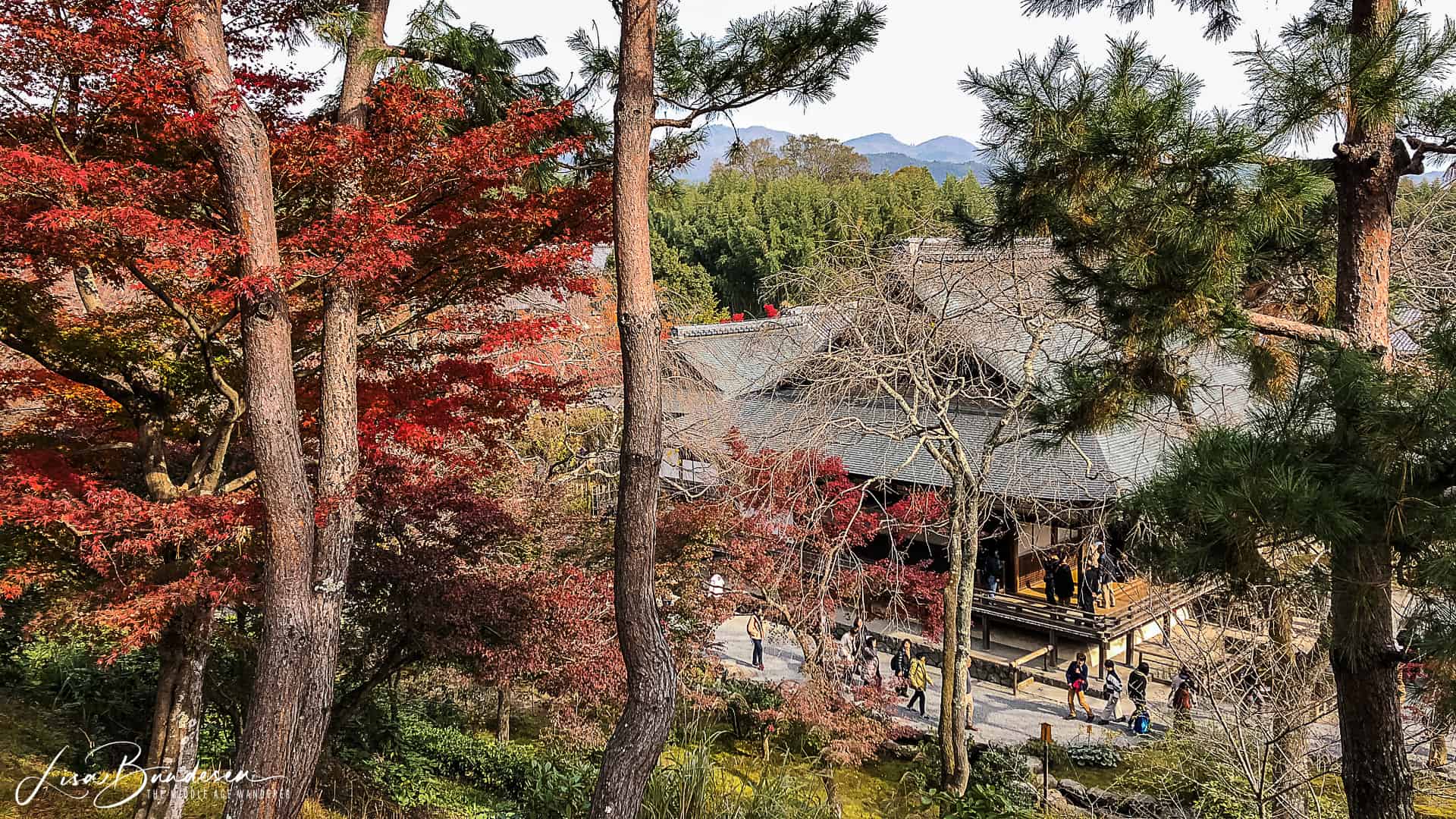
Book flights, hotels and car rentals with Skyscanner
Diving into the heart of Kyoto’s Gion district brings you to the enchanting steps of Yasaka Shrine, a place that feels pulsating with Japan’s ancient spirit and modern heartbeat. This shrine isn’t just a site; it’s an experience wrapped in history and festivity.
Yasaka Shrine, formerly known as Gion Shrine, dates back to 656, making it one of the oldest spiritual sites in Kyoto. It was established to protect the city from epidemics, and over the centuries, it has become a guardian not just of physical health but of cultural heritage as well.
Walking through its towering gates, you’re stepping into a realm where history and tradition blend seamlessly with the vibrancy of Kyoto life. The shrine is famous for its Gion Matsuri, one of Japan’s most renowned festivals. Held every July, this festival transforms the city into a lively tapestry of floats, traditional music, and dance. It’s an event that captures the essence of Kyoto’s community spirit and its deep-rooted connection to the past.
But Yasaka Shrine isn’t just for festival days. Visiting any time of year, you’ll find a peaceful haven, with lantern-lit evenings that cast a warm glow over the vermillion structures, creating a peaceful ambience that is difficult to find elsewhere. The shrine grounds invite you to wander, ponder, and lose yourself in the moment’s beauty.
Whether you’re drawn to the allure of ancient rituals, the charm of seasonal celebrations, or simply the tranquil beauty of a sacred space, Yasaka Shrine offers a glimpse into the soul of Kyoto.
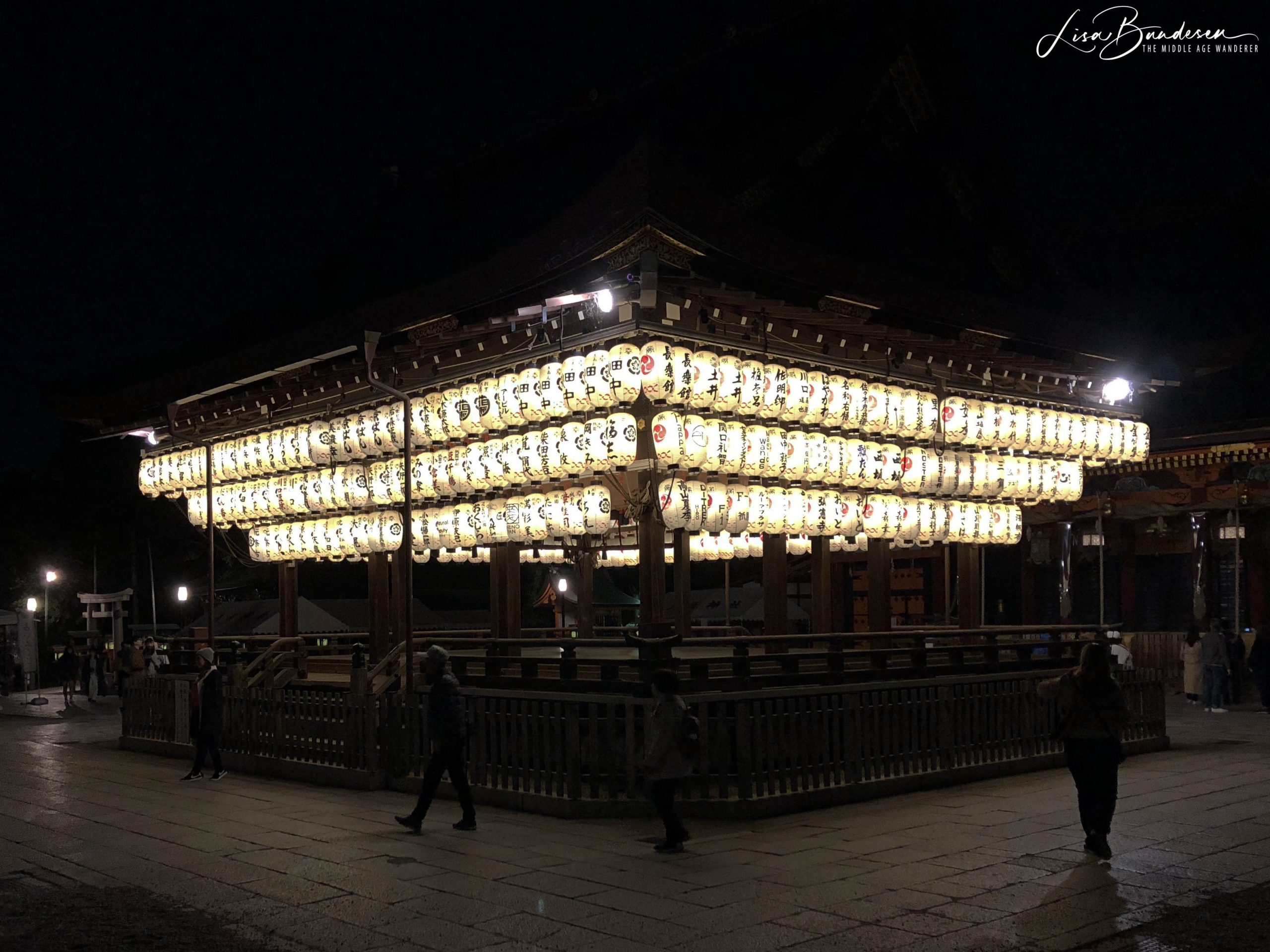
Right in the culturally rich district of Higashiyama, this temple serves as the headquarters of the Jodo sect of Japanese Buddhism, welcoming everyone with its grandeur and serene ambience.
The story of Chion-in begins in the early 13th century. It was established to pay tribute to Honen, who brought Pure Land Buddhism to Japan. It’s a place built on the principles of hope, compassion, and the pursuit of enlightenment, making it more than just a historical site; it’s a spiritual sanctuary.
As you walk through the massive Sanmon gate, the largest of its kind in Japan, you can’t help but feel a mix of awe and tranquillity. It’s like the gate doesn’t just welcome you physically into the temple and invites your mind to enter a state of peace.
Chion-in is famous not just for its size but for its profound cultural significance. It has played a central role in the development of Japanese Buddhism. It continues to be a site of pilgrimage and reverence. The temple grounds are a marvel, with spacious courtyards, stunning gardens, and buildings that reflect the architectural brilliance of Japan’s Edo period.
One of the most enchanting experiences at Chion-in is the night illumination events. Imagine the temple and its gardens bathed in gentle lights, creating a mystical atmosphere that transports you to another time. It’s a sight that captures the essence of Kyoto’s beauty and the temple’s spiritual significance.
For anyone exploring Kyoto, Chion-in is a must-visit. It’s not just about witnessing the grandeur of its structures but feeling the depth of its history and the warmth of its welcome.
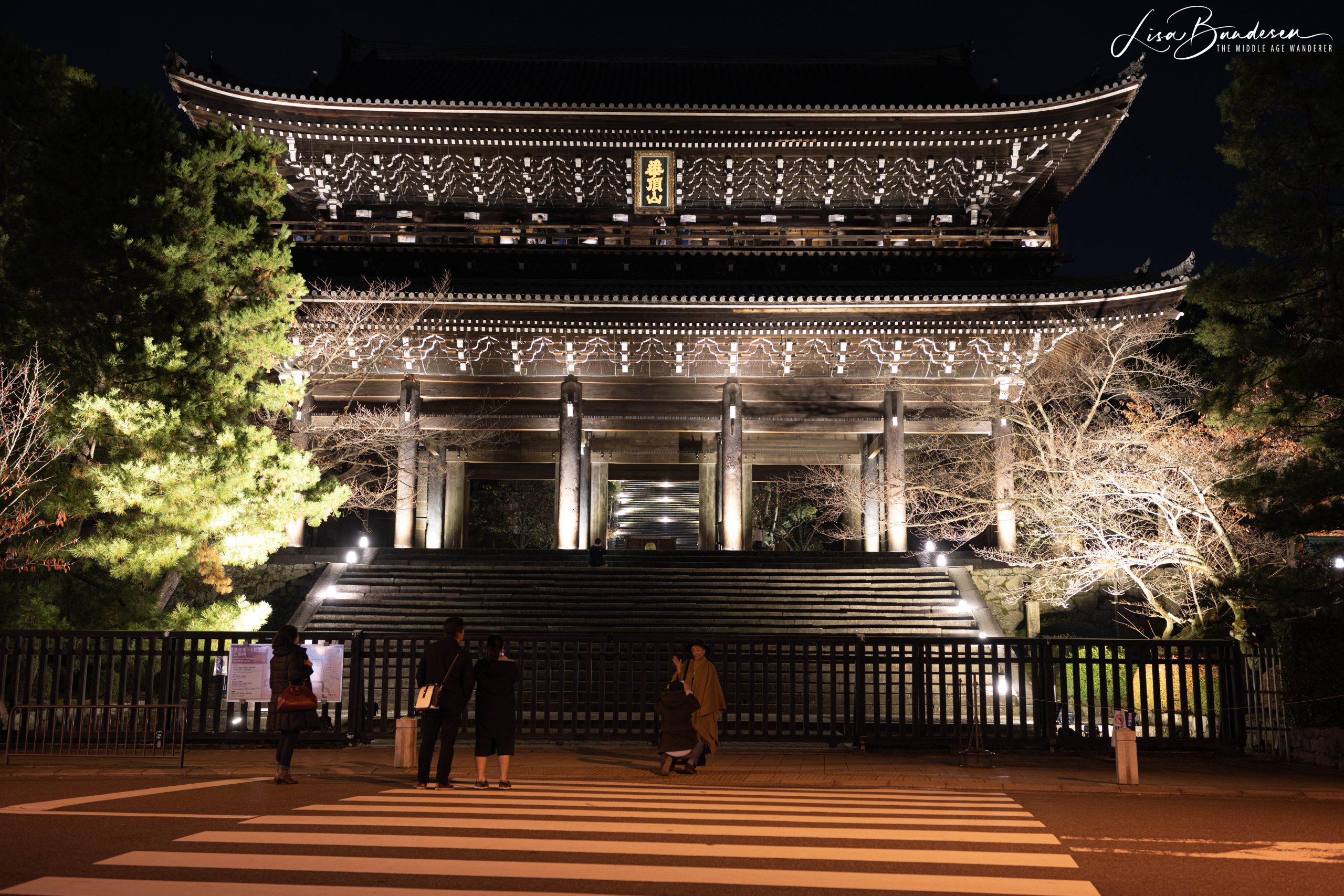
The temple was built after World War II, specifically in 1955, as a dedication to the Unknown Soldier of World War II. It features a giant statue of Kannon, the Bodhisattva of Compassion. It is an architectural marvel and a symbol of the deep wish for peace that transcends borders and conflicts. The towering 24-meter-high statue, looking out over the city, serves as a reminder of the cost of war and the precious value of peace.
Exploring the temple grounds, you’ll find yourself drawn into a space of reflection. There’s a quiet strength here, a sanctuary where visitors from all walks of life can come together to remember and hope. The temple also houses a memorial hall, which pays tribute to the souls of the war dead, further emphasising its role as a beacon of peace in a world too often divided by conflict.
Visiting Ryozen Kannon Temple is more than just a tourist stop; it’s a call to remember the lessons history teaches us about compassion, understanding, and the enduring pursuit of peace.
For anyone travelling to Kyoto, the Ryozen Kannon Temple is a profound reminder of the city’s depth and the universal longing for a world without war.
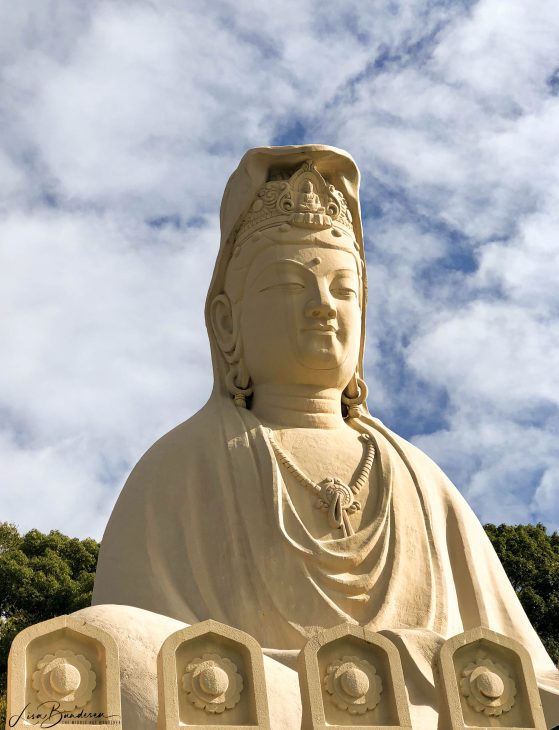
Blink, and you will miss this small temple; it is a site less trodden by the masses but filled with an aura of tranquillity and spiritual warmth. You will find it just over a block from Kamo River on Shijo-dori. This temple offers a serene retreat from the bustling city life, inviting visitors into a space of reflection and peace.
The temple, with its modest yet profoundly beautiful architecture, encourages a moment of pause, a breath of fresh air amidst the complexities of modern life. It’s where time seems to slow down even with the bustling street just outside, allowing visitors a moment for quiet contemplation.
The temple’s main deity, Jizo, is a figure of compassion and protection, especially revered for safeguarding children and travellers. Encounters with Jizo statues throughout the temple grounds remind visitors of the temple’s protective embrace, not just physically but spiritually.
Visiting the Chugen-ji Buddhist Temple is an intimate experience. It’s about stepping away from the well-worn paths to discover a space where spirituality and nature merge seamlessly. The temple might not boast the grandeur of Kyoto’s more prominent sites, but its charm lies in its simplicity and the profound peace that it offers.
For those looking to explore the spiritual heart of Kyoto beyond its famous landmarks, the Chugen-ji Buddhist Temple is a beautiful reminder of the city’s depth and diversity.
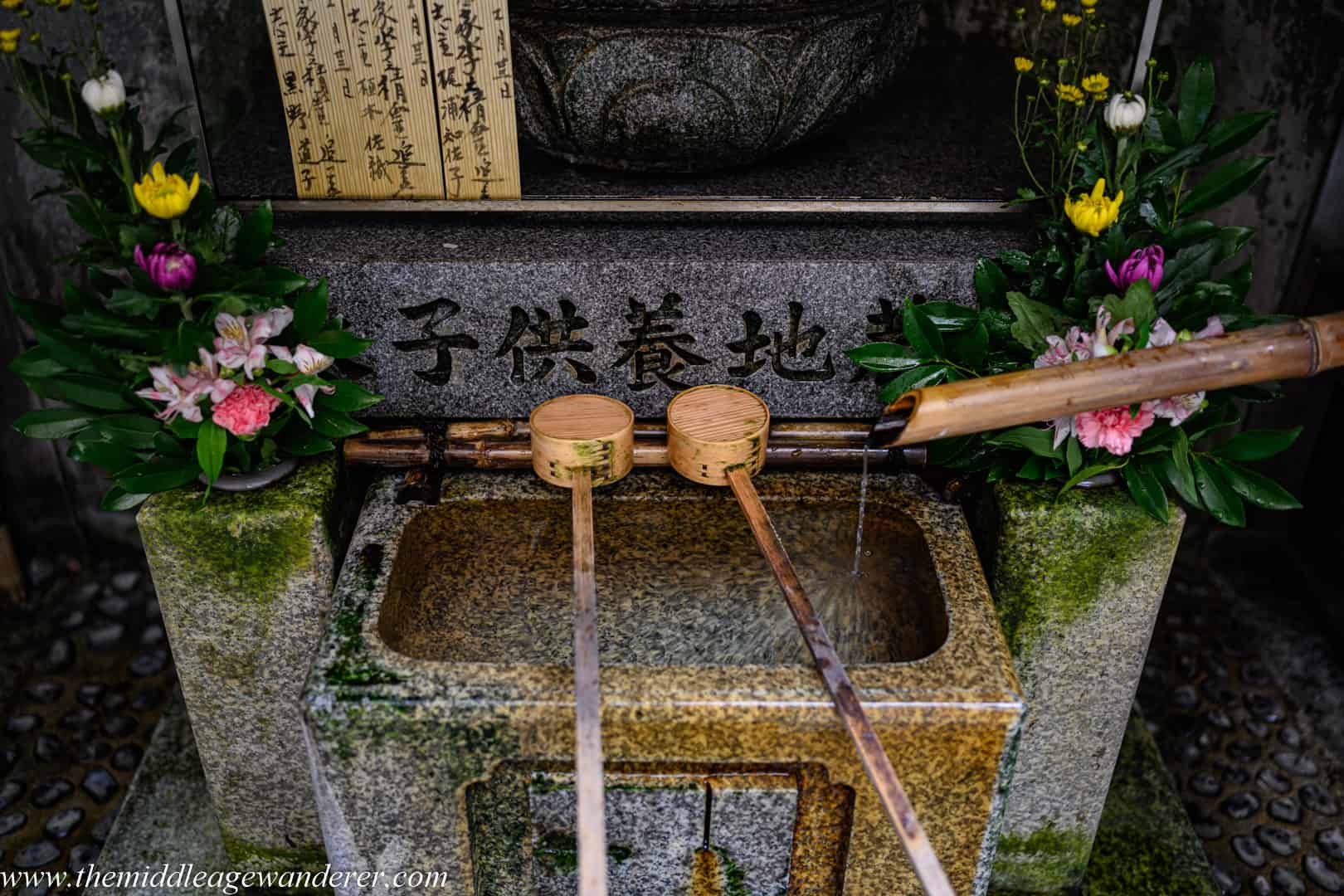
As the oldest Zen temple in Kyoto, Kennin-ji Temple is a beacon of Zen Buddhism. Founded in 1202 by the renowned priest Eisai, who introduced Zen Buddhism to Japan, the Kennin-ji Temple exudes an aura of profound tranquillity.
Visitors are greeted by the majestic Sanmon Gates when entering the temple grounds. At the heart of Kennin-ji Temple lies the Hojo, or Abbot’s Quarters. It is a sanctuary of serenity adorned with exquisite fusuma paintings by the legendary artist Koizumi Junsaku.
Just a stone’s throw away from Kennin-ji Temple lies the enchanting Kodai-ji Temple, a testament to the elegance and grace of the Momoyama period. Founded in 1606 by the illustrious Kita-no-Mandokoro, also known as Lady Nene, in honour of her late husband, the warlord Toyotomi Hideyoshi, Kodai-ji Temple mesmerizes visitors with its harmonious blend of architecture and nature.
Wandering through the temple’s meticulously manicured gardens, adorned with tranquil ponds, lush foliage, and meandering stone paths, one cannot help but feel transported to a realm of timeless beauty and tranquillity. The iconic Kaisan-do Hall, with its graceful wooden architecture and views, offers a glimpse into the refined aesthetic sensibilities of the Momoyama era.
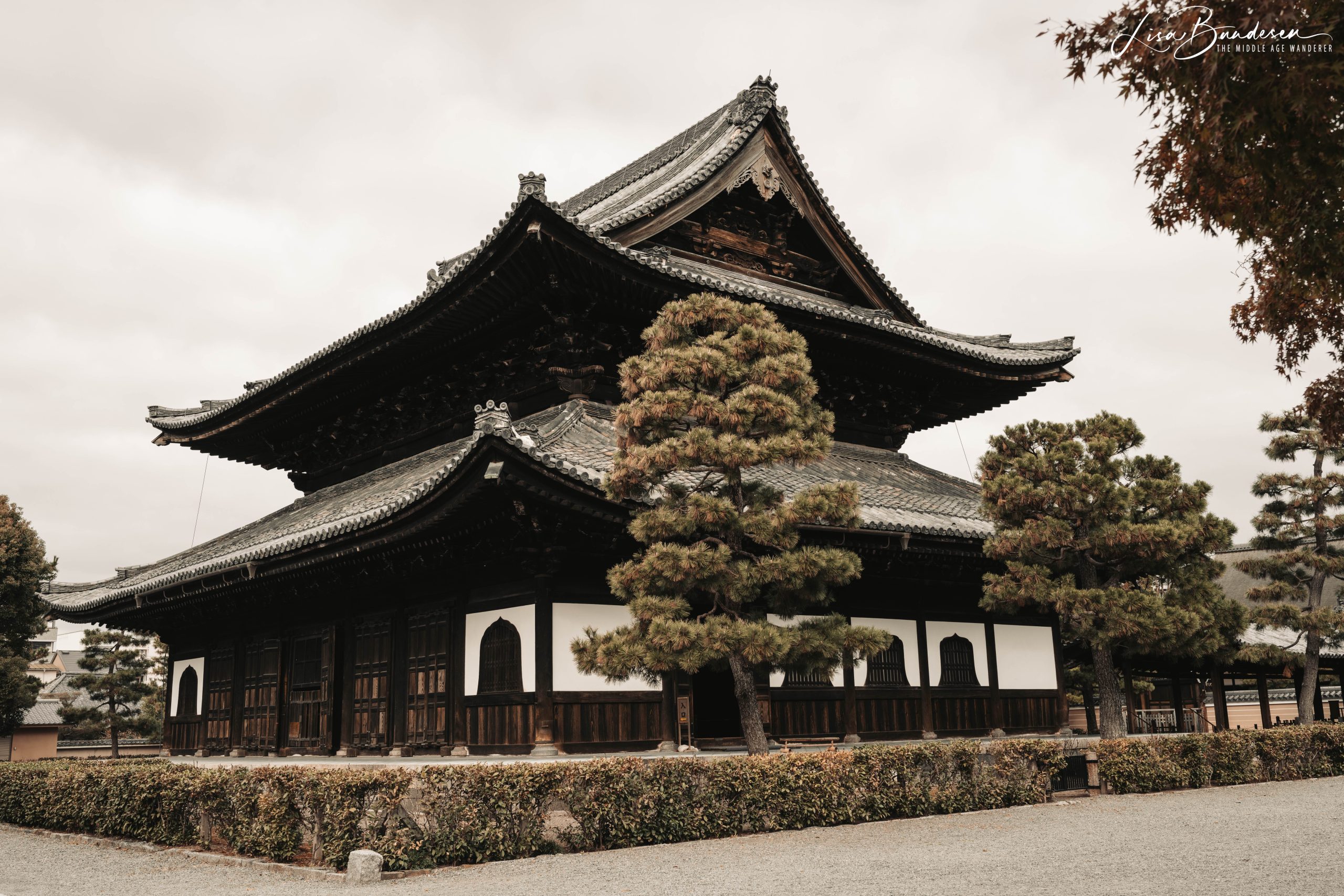

I’m a 50 something semi-retired accountant, who along with my husband, Darren, has worked hard to have a great career and be financially stable. Now it’s time to enjoy life more.
To enjoy life more, I’ve had to work hard to improve my fitness (I hiked the Inca Trail in my 40’s) and to keep fit to be able to do all of those things we want to do. That isn’t always easy because we also love to explore different cuisine and wine around the world and at home.
We travel as much as possible, both overseas and at home. We call Australia home and find that there are so many places to explore here as well.
But the main reason we return home from our adventures are our two beautiful girls, Jazz and Indy. Oh and yeah we both have work as well!

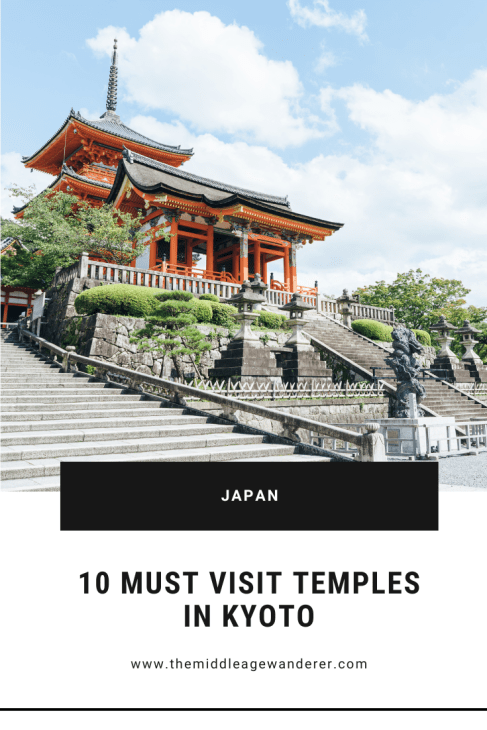
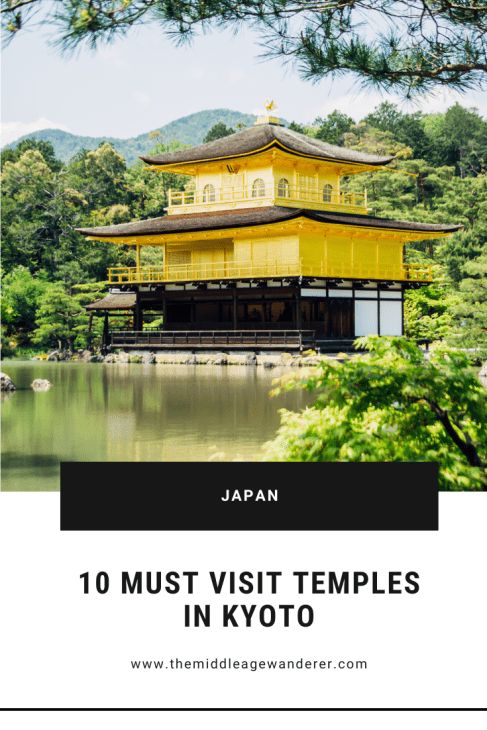
© 2024 The Middle Age Wanderer
Made with 



14 Responses
I do not know how to put it, but temples/ monasteries and shrines like these attract me at an inexplicable level. I hope to visit Japan soon.
I am the same. I always visit the temples / monasteries / churches when I’m travelling.
I have visited several temples in Japan, including Fushimi Inari and Kinkaku-ji. I had a great experience at all of them and I would love to visit Japan again.
Definitely great experience to visit the temples.
It’s been 20 years since I visited Kyoto and I still dream about going back. Your photos are magical and really took me down memory lane. I do hope I can visit again some day. Beautiful post.
Thank you! And we would also love to get back to visit.
I have only ever visited gardens recreated in the US but they are beautiful, serene, and peaceful.
The gardens are beautiful too.
I appreciate that you included those temples less trodden by the crowds of tourists. All of the temples you included look worth a visit.
Thanks Sonia. We love to find the “less visited” places to explore.
Thank for taking me back for a view of the beautiful temples os Kyoto. I must admit the temple and reflections that we got at the Kinkaku-ji Golden Pavilion are some of the most stunning we remember from our visit to Japan. But each one is just enough different that you never want to pass on another temple.
Totally agree Linda. We loved visiting all of the temples and if we had more time we would have visited others.
These temples are just so aesthetically pleasing. You can feel the vibe just from photos of them.
The temples are definitely beautiful and even better in person.